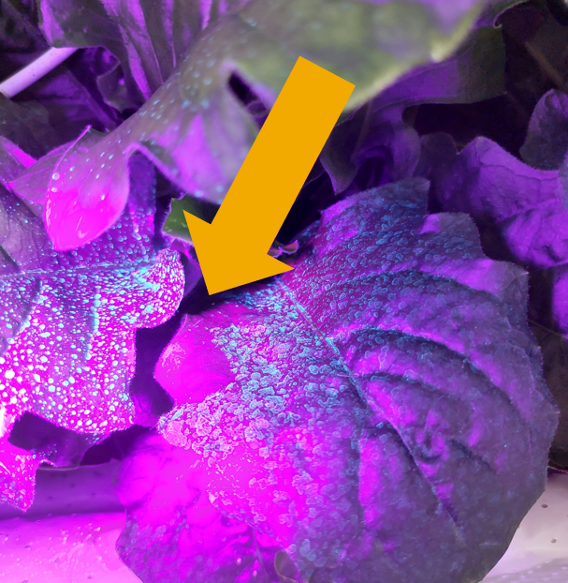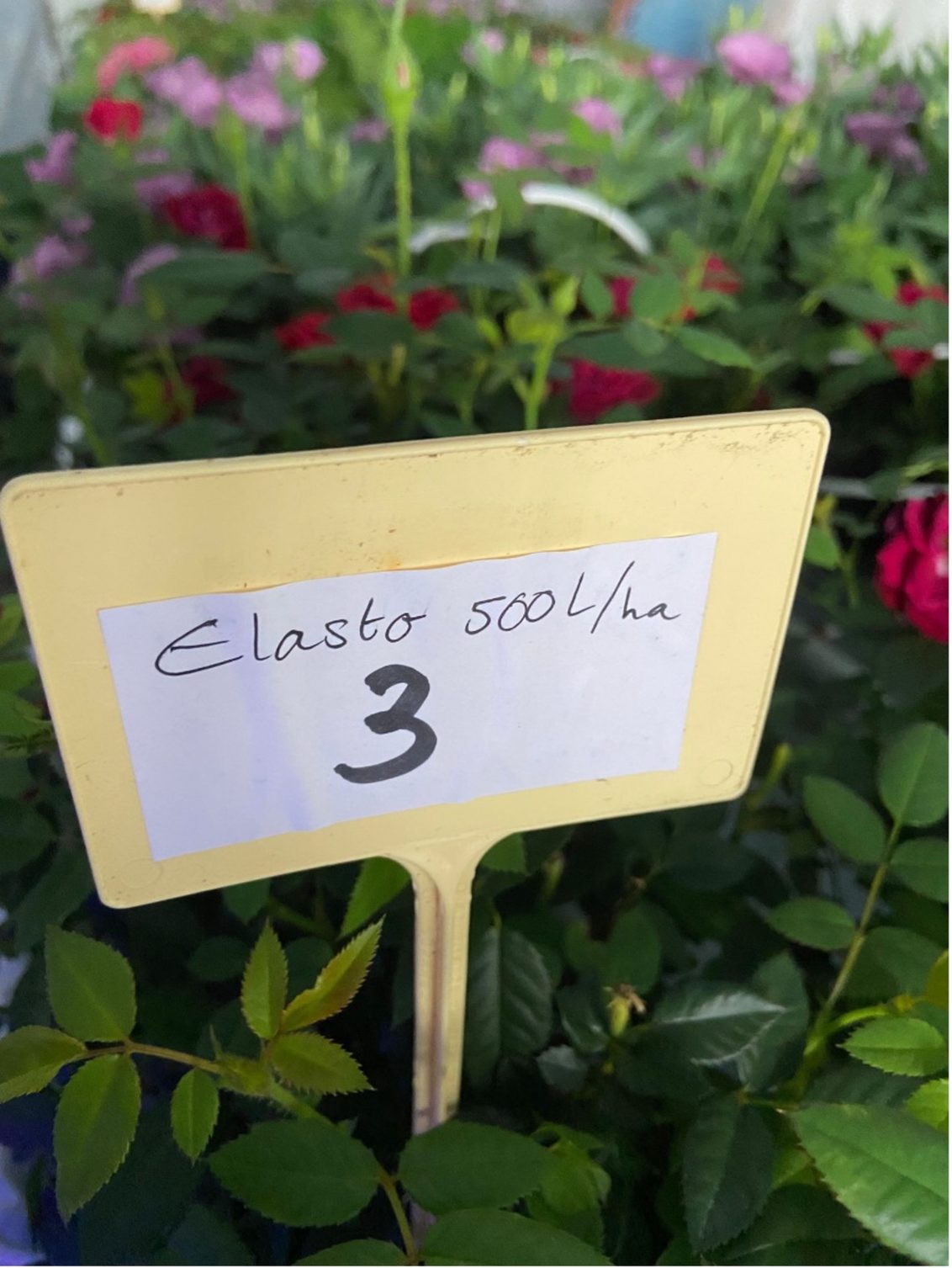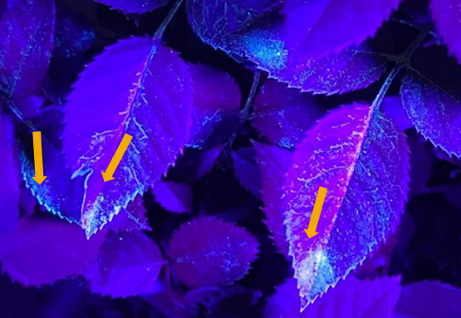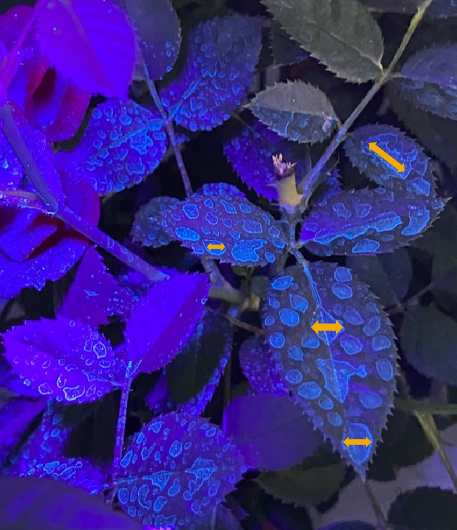UV to see the adjuvant story
Where do adjuvants add value?
Adjuvant’s, much like biostimulants, are products where it can be difficult to see the value, they add in a commercial crop straight away.
Unlike conventional chemical treatments, they don’t claim to give you “90% disease control” or “reductions in pests in 24 hours”, such effects are typically clear to the eye. Adjuvants enhance the effects of other products, the problem with that is, it’s more difficult to see with your own eyes.
On a recent trip to trial sites in Delft in the Netherlands I got a great opportunity to compare adjuvants with my own eyes. We know that different adjuvants have different properties, excluding uptake enhancers here, as we need leaf tissue analysis for those products. So, we could see the adjuvant on the crop, a formulated marker is added to the spray tank, imagine the stuff that makes your whites whiter in your washing machine, it’s the same concept. And by using a black light torch, you are then able to instantly see the spray effects.
Try water sensitive paper
To assess the deposition of spray droplets, you can purchase water sensitive paper, cut pieces up and put them in and around the crop. You can then see the distribution of droplets on the papers and consider if you are getting adequate coverage, or if improvements are required. Whilst a useful step, you don’t get to see the effect an adjuvant will add, as the papers have a surface that’s different to an ornamental plant.
Factors which can affect the way water (and so spray deposits) land and sit on a leaf surface:
- Waxiness of leaf (think Ficus)
- Hairiness of leaf
- Leaf angle (level or all leaves angled up or down?)
- Leaf architecture (flat or very defined veins/channels?)
Those are just for an individual leaf, the growth stage of the plant, cropping density and canopy density will also impact spray coverage.
Deep diving into the trial
Below is an example of one Gerbera leaf overlapping another, this left a ‘shadow’ with no treatment applied to that area, highlighting that good spray technique is always important.

One of the studies I got to walk around was to compare different adjuvants at two water volumes:

Each product was mixed with a special formulated marker, which shows up when exposed to UV.
So, when the deposits are dry, and you shine a UV torch on the plants you can see how the product dried on the leaf as a result of the droplet deposition, and the spreading of the adjuvant. Without UV, you can’t tell the plants have been treated.

Real life examples
To demonstrate the variety of effects, we had a range of ornamental crops in the trial, and we carry out ongoing testing in real world conditions to deliver the best products for professional growers.
Different adjuvants have their place depending on what you want to achieve, but one take away for me was that we need to be conscious of what we are trying to do. You can see in the image below, the “superspreading” ability of the organosilicate product at 500 & 1000L water volumes leads to run off in some crop types. This is at best a waste of product and can lead to an excessive concentration of active on the leaf tips which could lead to phyto damage.

What we could see in the Elasto treatments was the droplets had great coverage, where they had spread out, but its not a ‘superspreader’ so we didn’t observe those run off marks.

Water droplets on a waxy surface (like a leaf) would usually shrink inwards when the water is evaporating off, this leaves the active ingredient in the spray solution in tiny dots. But the properties in Elasto mean the droplet spreads out on contact, and holds that shape until evaporation is complete, so coverage area is improved vastly.
Top tips for success
Spraying ornamental crops is never easy, in the UK and Ireland few growers are focusing on just one crop type so the spray apparatus needs to be set up for a multitude of situations. Elasto is an adjuvant that’s going to allow you to get more out of the inputs you’ve invested the time and money to spray.
It’s proven to help in a variety of situations:
- Improves coverage of contact acting fungicides & insecticides
- Enhances coverage & performance of biofungicides (like Taegro)
- Increases uptake of PGRs, you don’t need so much, or what you do apply gives stronger suppression
- Improved herbicide uptake (weed control)
Adjuvants are already important, but are becoming increasingly so as we see labels with limits on the number of applications per year. A product like Elasto will give you the best performance out of a spray so you get higher control, and so can increase the intervals between applications.

